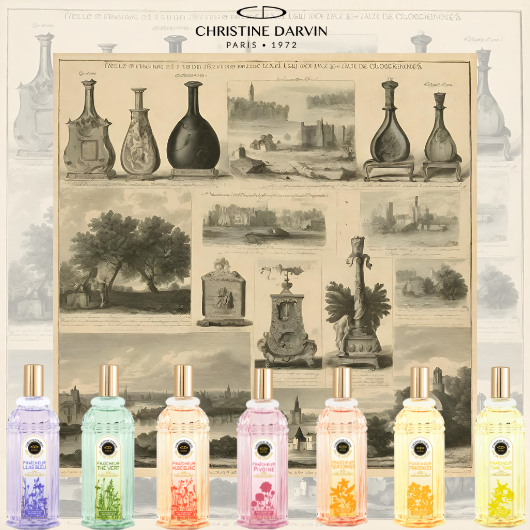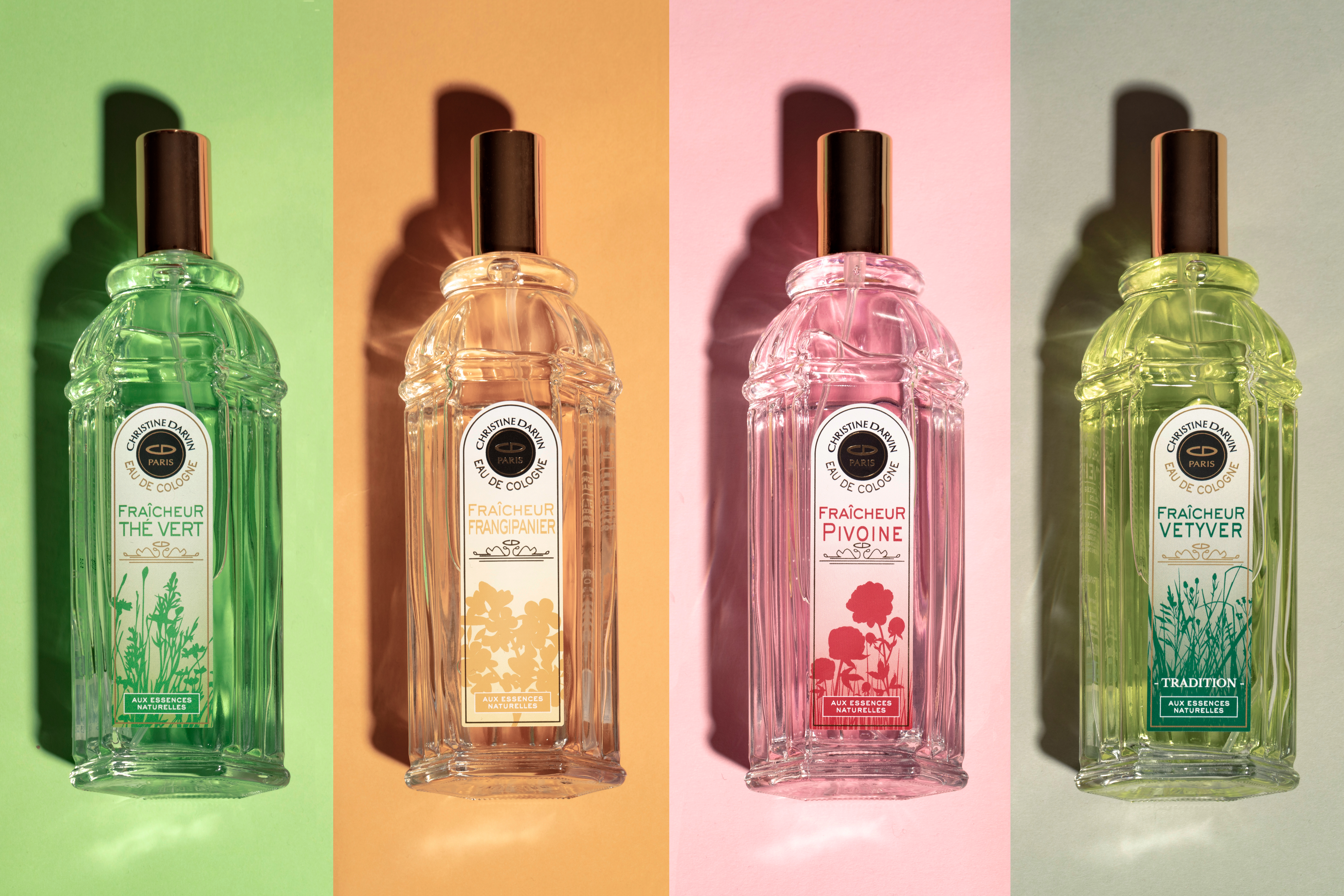The history of eaux de Cologne

The mystical origins of perfume: From sacrifice to the gods to the art of perfumery
The history of perfume goes back to the dawn of civilization, when its primary use was far from being aesthetic art. In many cultures around the world, perfume was offered as a sacrifice to the gods, creating an olfactory link between the earthly world and the divine. Incense, oils and other fragrant materials were carefully prepared, burned or scattered to send a message of devotion and respect to the heavens.
The tradition of perfume as a gateway to the divine slowly evolved into a more everyday practice, as the nobility of ancient Egypt began to use scented blends for beauty and seduction rituals. The use of perfume then gradually spread to various spheres of social and cultural life, becoming an essential part of everyday human life.
In this continuous evolution, the art of perfumery was born, with dedicated perfumers devoting their lives to creating new blends and refining techniques. In France, for example, the town of Grasse has become a major center of perfumery, where expertise has been carefully passed down from generation to generation.
Interestingly, despite such evolution, the sacred dimension of perfume endures. Many modern perfumes include ingredients used in ancient rituals, recalling the deep history of perfume. It's a useful lesson in how an ancient tradition can adapt and thrive in the modern world, reaffirming the universal power of fragrance.
In short, perfume has had a fascinating journey, linking the transcendent and the everyday. Its historical journey is a source of inspiration for anyone interested in modern perfumery, with lessons on respecting tradition while embracing innovation.

A plunge into history: Perfume through the ages
The history of perfume begins long before the modern era. Its birth dates back to the Bronze Age, when the art of perfumery was intrinsically linked to spirituality and medicine.
The Middle Ages is an interesting era in the history of perfume. During this period, perfume was essentially used to mask the odors of sweat and disease. It was considered a luxury product, favored by the aristocracy and elite. It was also during this period that the craft of perfumery was born.
The Renaissance saw a significant turning point in the history of perfume. It was under the reign of Louis XIV, nicknamed the 'perfumed king', that perfumery gained momentum. He had a passion for fragrances and actively encouraged their use. Louis XIV commissioned a different fragrance for each day of the week, dedicating an entire room in his palace to perfumery.
The evolution of perfume has continued over centuries and decades. With the advent of improved distillation techniques and synthetic ingredients, perfume creation was decentralized, allowing the industry to develop in all its modern diversity and complexity.
Today, perfumery is seen as an art form, an echo of its rich tradition, with a modern twist. Today's perfumes are more than just blends of essential oils and fragrances. They are a reflection of individuality, a vehicle for self-expression, symbolizing our times.
Ultimately, a look at the history of perfume reveals a fascinating evolution, with each era bringing its own trends, power plays, techniques and styles. The history of perfume is intrinsically linked to the history of mankind, reflecting the tastes, desires and aspirations of the times.
Eau de Cologne: The birth of a perfumery classic
It's inevitable to talk about perfume without mentioning Eau de Cologne, an indisputable classic in the world of perfumery. Beginning with its disputed origins, the story of Eau de Cologne, despite several contradictory claims, remains fascinating and illustrates its evolution through time. Born in the 18th century, it originated in the German city of Cologne, from which it takes its name. According to the most popular legend, an Italian perfumer, Giovanni Maria Farina, created the fragrance as a tribute to his hometown.
Each fragrance has its own distinctive characteristics. Eau de Cologne has proven to be a fragrance like no other, thanks to its unique characteristics. It carries a citrus essence, more refreshing and lighter than other types of perfume, making it perfect for everyday use. The refreshing aspect of Eau de Cologne has played a big part in its popularity, especially during the hot European summers. This solidified its place not only in perfume history, but also in the daily routines of people the world over.
The tradition and history behind Eau de Cologne go beyond its design and popularity. It has also stood the test of time, becoming a pillar of the perfume industry. Its legacy has endured through centuries of evolution in perfumery, and continues to play a decisive role in defining perfume standards of excellence. In short, Eau de Cologne illustrates the harmonious meeting of past and present, tradition and innovation.

A perfume world tour: The evolution of eau de Cologne through the centuries
To begin with, the history of eau de Cologne requires a look at the Europe of the time, and more specifically at Germany, where this fragrance was born. Nothing could have predicted the importance this fragrance would have in the world of perfumery. Made with essential oils of bergamot, orange, lavender, rosemary, thyme and neroli, the eau de cologne's fresh, light fragrance quickly crossed German borders.
The path of German tradition eventually reached the Ottoman Empire. Under the shadow of minarets and in the hum of bazaars, eau de Cologne changed its mãos completely, adopting different, more oriental notes. Ottoman perfumers began to incorporate local ingredients, such as musk, amber and sandalwood, creating more intense, spicy scents that resonated with the oriental soul.
Then came another major evolution in the history of cologne: the arrival of citrus. The appearance of citrus notes gave perfumery a new direction, producing fresh, invigorating and joyful fragrances. Citrus scents quickly became the star of perfumes, especially in eaux de Cologne, where these notes offered a bewitching freshness.
Advances in technology have led to the introduction of synthetic notes into contemporary perfumery. These notes, less costly to produce and easier to control in terms of quality and olfactory character, have opened the door to a new era of creativity in perfumery. Synthetic fragrances have enabled the creation of novel scents that could not exist in nature, adding greater diversity and flexibility to the perfumer's arsenal.
In the face of commercial and technological pressures, cologne has maintained and even enriched its heritage. Despite these constant transformations, this precious scent has retained its untouchable essence and place in our olfactory history. Proof that past and future can coexist harmoniously in a small bottle of perfume.
Christine Darvin: A source of inspiration in perfumery tradition and innovation
Eau de Cologne today: A return to classic and simple aromas
When it comes to fragrance, current industry trends show a renewed interest in classic, simple aromas. This reflects consumers' desire to get back to the essence of things, a kind of return to tradition. These new preferences also reflect the need to move away from the heavy, complex and sometimes artificial fragrances that have dominated the market in recent decades.
History appears to be repeating itself in the world of perfumery. Back in the day, when eau de Cologne first appeared in 1709, it was characterized by lightness and freshness, qualities that seem to resonate with today's man and woman. Interestingly, this return to our roots has not been at the expense of the perfume industry's evolution and creativity.
The evolution of cologne towards simpler aromas also reflects the broader movement towards environmental awareness. As more and more consumers consider the impact of beauty products on the environment, eau de Cologne with its simple, natural and biodegradable ingredients is an attractive option.
Consequently, the new trend towards simple, classic aromas doesn't mean stagnation in the history of cologne, but rather a new page of evolution that draws inspiration from its past. New interpretations of the original formula continue to emerge, proving that the world of perfumery never ceases to reinvent itself while honoring its history.
See also :
.png) How to choose the best eau de Cologne for you
How to choose the best eau de Cologne for you
“
La Fraicheur au naturel
by
Christine Darvin
”

